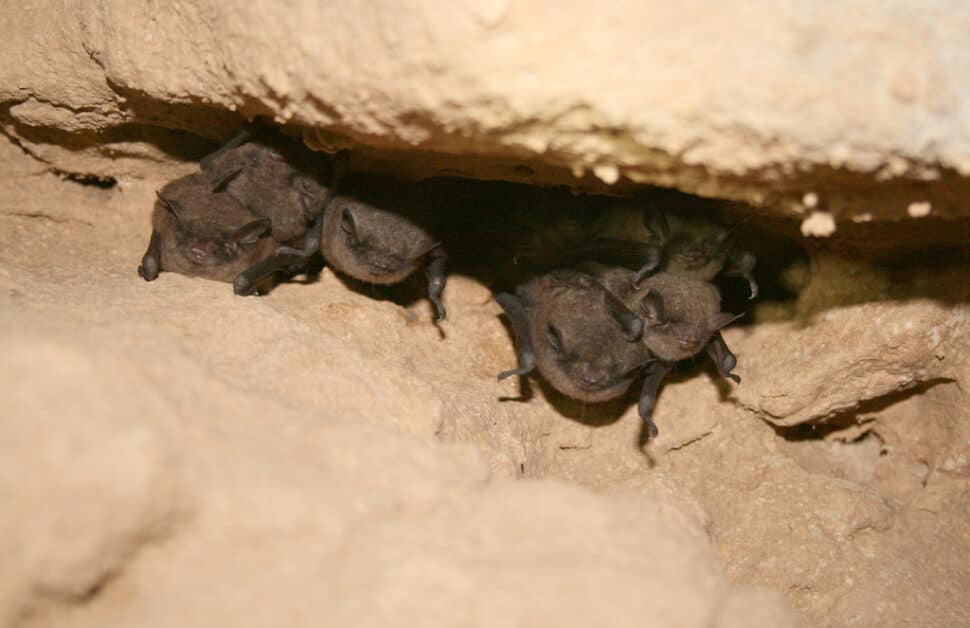
Bats are scientifically named ‘chiroptera’ – a word that means ‘hand wing’ in Greek and refers to how they have four long fingers and a thumb, with a thin layer of skin connecting all of them together to form wings.
Recognised as the only flying mammal, bats are intriguing creatures that occupy nearly the entire globe, with the Antarctic, Arctic and certain Oceanic islands being the only exception. Despite the estimated 1,400 species of bat across the world, experts believe that many are yet to be discovered, and they are also surprisingly common in the UK.
In this guide, we answer key questions about the species of bats in the UK, as well as broader questions about bats in general.
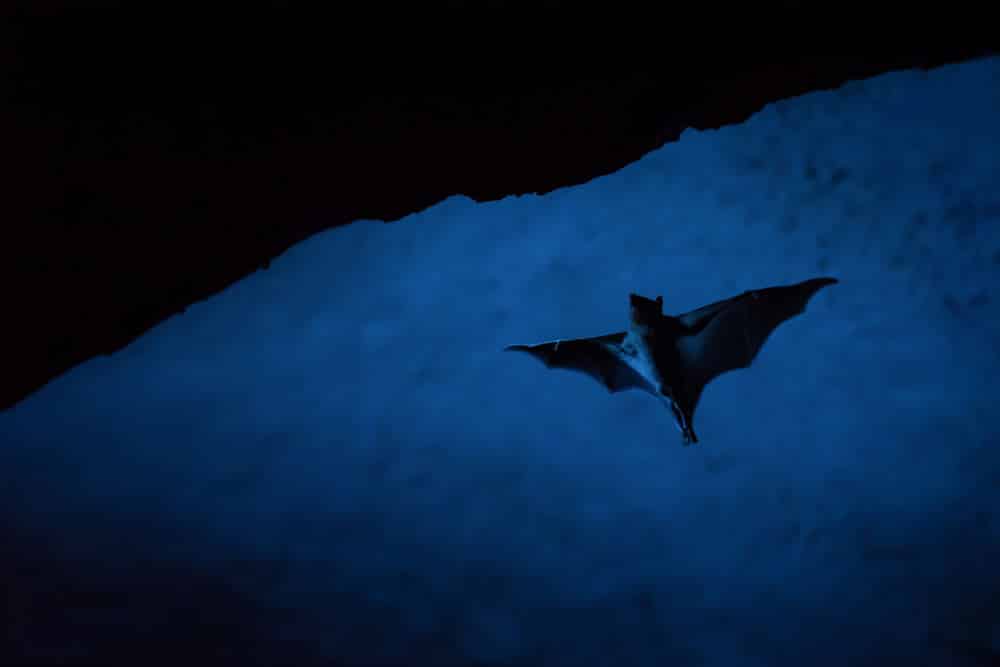
UK bats
If you are unfamiliar with bats, you may be unaware of their behaviour and characteristics. It may even be the case that, until now, you weren’t entirely aware that there were any bat species in the UK.
Below, you will find answers to some common questions about the species of bats currently residing in England, Scotland, Northern Ireland and Wales.
Are there bats in the UK?
Despite the presence of bats being relatively modest, they make up over a quarter of mammal species in the UK. At present, there are 18 known species of bat in Britain, with data suggesting that at least 17 of these species are continuing to breed.
Are bats protected in the UK?
Under Article 12 of the European Commission’s Habitats Directive, bats are listed as a protected species and are therefore protected by law in the UK and Ireland. Additionally, the directive forms part of the Conservation of Habitats and Species Regulations 2010 in UK legislation specifically for England and Wales. Within these rules, it is a legal offence to capture, disturb, injure, keep, kill, sell or transport any European protected species including bats.
Are UK bats dangerous?
Although commonly depicted as being viscous in films and TV shows, bats are in fact rarely aggressive and are more likely to avoid all contact with humans. However, there are bats in the UK that carry one of several strains of rabies that are grouped under the name European Bat Lyssaviruses (EBLV). The UK currently has a rabid-free status, and it is unaffected by EBLV due to it being different to the classical form of rabies that is traditionally associated with dogs.
In terms of the risks they pose, bats are usually safe to handle providing suitably thick gloves are worn. However, as the rabies virus is transmitted between infected bats and humans via open orifices, it could be passed on through a bite or scratch, or if an infected bat’s saliva reaches the eyes, mouth or nose of a human.
Do British bats hibernate in winter?
As with many protected species in the UK, bats hibernate during the colder months of the year. Known as a ‘torpor’, bats will enter a deep sleep over an extended period of time, slowing their metabolic rate and lowering their body temperature to conserve energy and utilise the food already in their system. Underground areas such as caves are often used by bats during hibernation, as bat roosts need to remain at a consistent temperature and caves are not affected by surface weather patterns.
What do British bats eat?
While some bats across the country have an appetite for bark, berries, fruit, leaves and seeds, all bats in the UK eat insects. A certain type of insect may be preferable based on the species of bat, and they can eat in high quantities, with some bat species eating as many as 3,000 insects in a single night.
Depending on the size and location of the insect, bats may catch and eat them during flight or bring them back to their roost to consume while hanging upside down.
Identifying British bats
Despite the rather extensive selection of bat species in the UK, it is unlikely that you will ever catch a glimpse of them. Between hibernating during winter months and only being active at night, the chances of spotting a bat are minimal. If, however, you want to increase your chances, you are more likely to see a bat around dusk or dawn and between the months of March and November.
What species of bat live in the UK?
As previously mentioned, there are 17 active species of bat in the UK, as well as one additional species that is rarely spotted and presumed extinct by many experts.
UK bat species include the alcathoe bat, barbastelle bat, Bechstein’s bat, Brandt’s bat, brown long-eared bat, Daubenton’s bat, greater horseshoe bat, greater mouse-eared bat, grey long-eared bat, Leisler’s bat, lesser horseshoe bat, Nathusius’ bat, Natterer’s bat, noctule bat, pipistrelle bat, serotine bat and whiskered bat.
UK bat species
If you are interested to learn more about the 18 species of bat in the UK, understand how each species is unique, and identify them correctly, we’ve provided a helpful guide below.
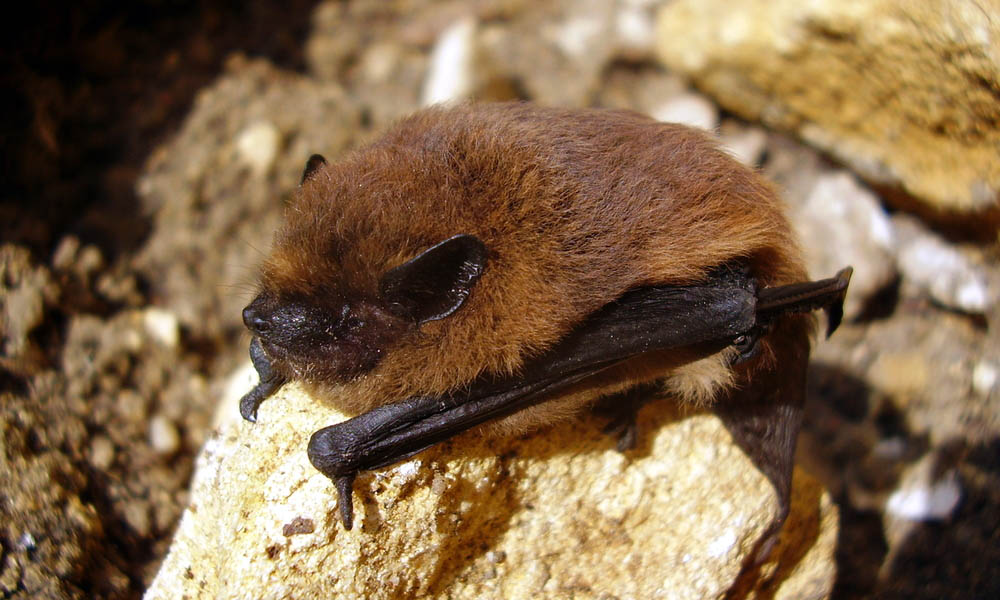
Pipistrelle Bats
Scientific name: Pipistrellus pipistrellus
Body Length: 35 millimetres
Wingspan: 22 centimetres
Brown fur on their back, lighter fur on their stomach and a dark face, around 75% of bat sightings in the UK are common pipistrelles, making them the most common bat species in Britain. As such, if you see a British bat, the chances are that it will be a common pipistrelle bat. As well as the most frequently spotted, they are also the smallest bat species in the UK, with short bodies and hind legs.
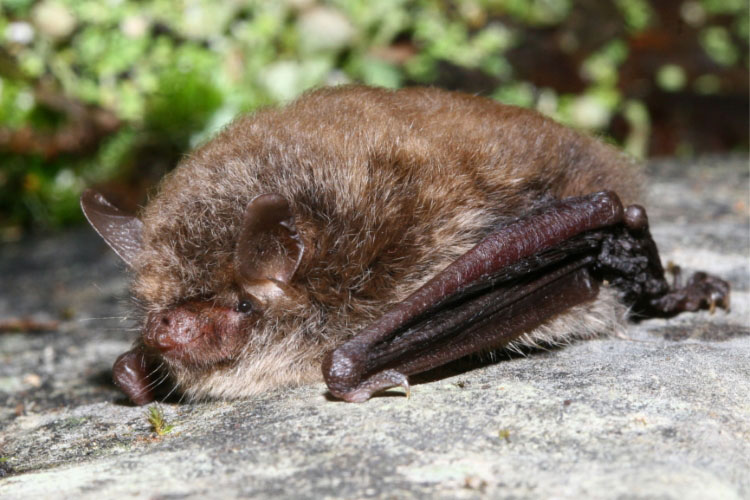
Alcathoe bats
Scientific name: Myotis alcathoe
Body Length: 40 millimetres
Wingspan: 20 centimetres
Similar in appearance to the Brandt’s bat and whiskered bat species, the alcathoe bat has short brown ears and reddish-brown fur. They are the latest addition to the UK bat family after being discovered in 2010, meaning their habits are yet to be properly understood. However, they are often found in woodland or near to areas of water.

Barbastelle bats
Scientific name: Barbastella barbastellus
Body Length: 45 millimetres
Wingspan: 27 centimetres
Visually reminiscent of a pug or French bulldog, the barbastelle bat has an upturned nose, dark fur and large ears that come into contact in the middle. An elusive species, they typically roost in the crevices of tees, fly quickly through the air and forage over a wide range of habitats.
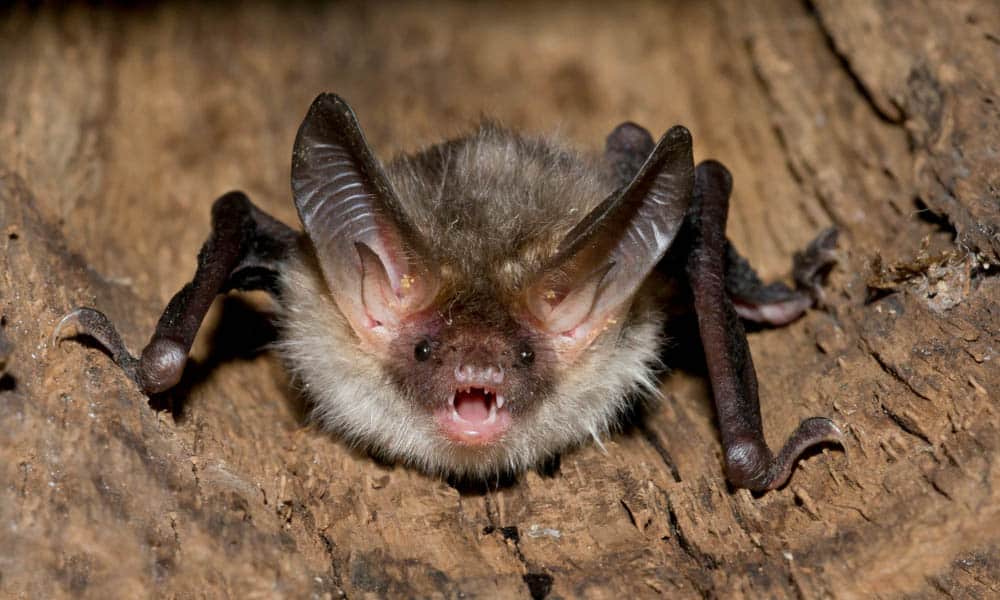
Bechstein’s bats
Scientific name: Myotis bechsteinii
Body Length: 45 millimetres
Wingspan: 28 centimetres
With a reddish-brown back, grey stomach, pink face and long ears, the Bechstein’s bat is unique in appearance. They usually gather in large colonies, and despite being one of the rarer UK bat species, they appear frequently in woodland areas.
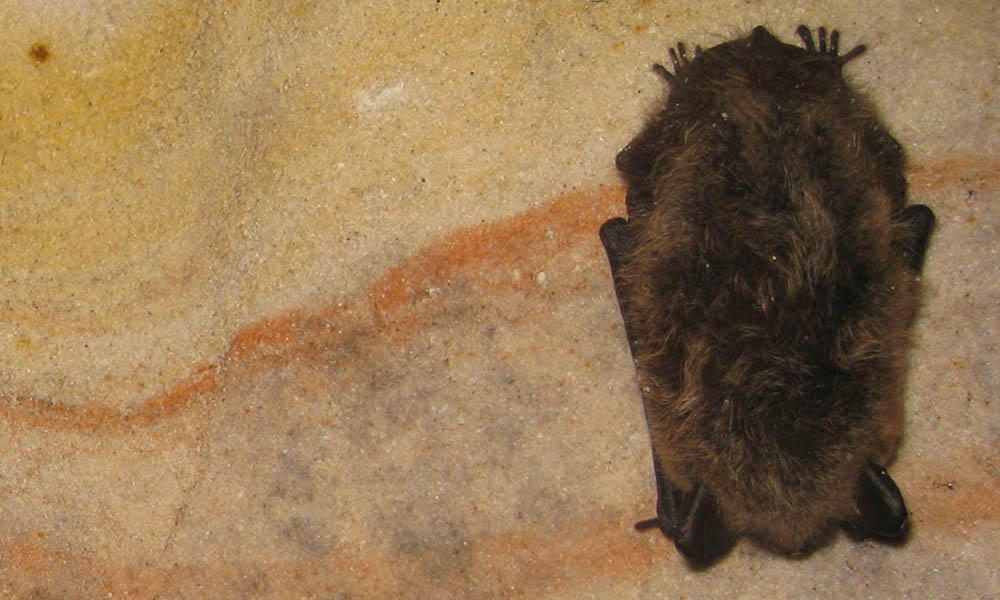
Brandt’s bats
Scientific name: Myotis brandtii
Body Length: 40 millimetres
Wingspan: 24 centimetres
Small and similar in appearance to whiskered bats, the Brandt’s bat has bushy grey or brown fur on its back, a grey stomach and a pink face. Prone to creating a habitat in almost any area, they have been known to roost in old and new buildings as well as bat boxes. They are also known for feeding low to the ground in woodland or near water.
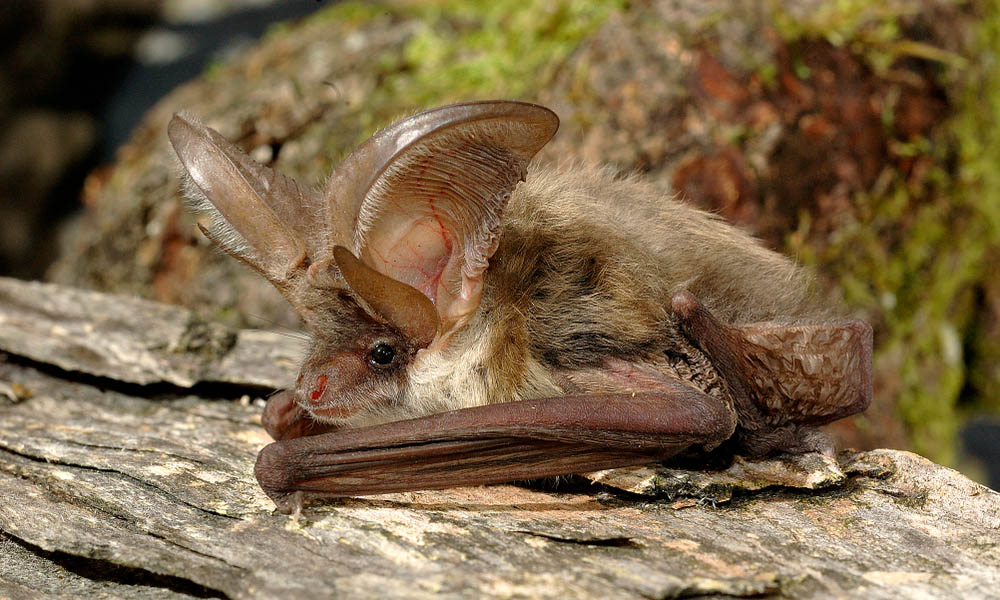
Brown long-eared bats
Scientific name: Plecotus auritus
Body Length: 45 millimetres
Wingspan: 25 centimetres
With large brown ears and greyish-brown fur, the brown long-eared bat is distinctive and easy to identify. Their ears are almost as long as their entire body, and they give them an impressive hearing range. Medium in size, they fly at a slow pace and roost in a number of areas including buildings, gardens, parks and woodland, as well as in bat boxes and holes in trees.
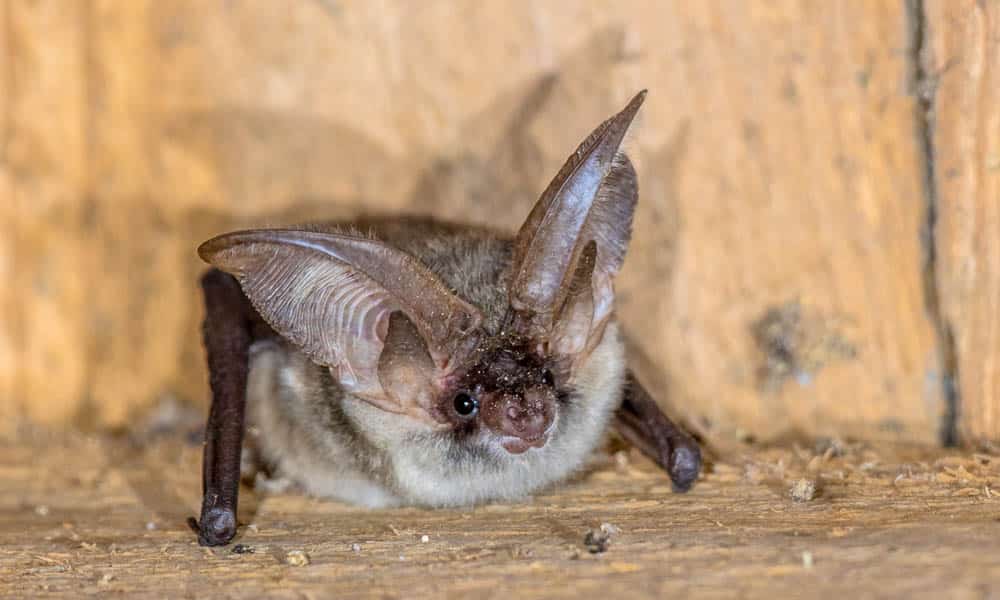
Grey long-eared bats
Scientific name: Plecotus austriacus
Body Length: 45 millimetres
Wingspan: 25 centimetres
Sharing a similar visual appearance to the brown long-eared bat, the grey long-eared bat’s main difference is their colour, as well as having a darker face and stomach. Just like the brown long-eared bat, they have large, distinctive ears that are almost as long as their entire body.

Greater horseshoe bats
Scientific name: Rhinolophus ferrumequinum
Body Length: 70 millimetres
Wingspan: 40 centimetres
A notably large bat, the greater horseshoe bat has a reddish-brown back and a cream-coloured stomach. The name comes from their fleshy, rounded nose in the shape of a horseshoe. Previously solely a cave-dweller, they now roost in a far broader selection of areas such as barns, churches and old buildings.
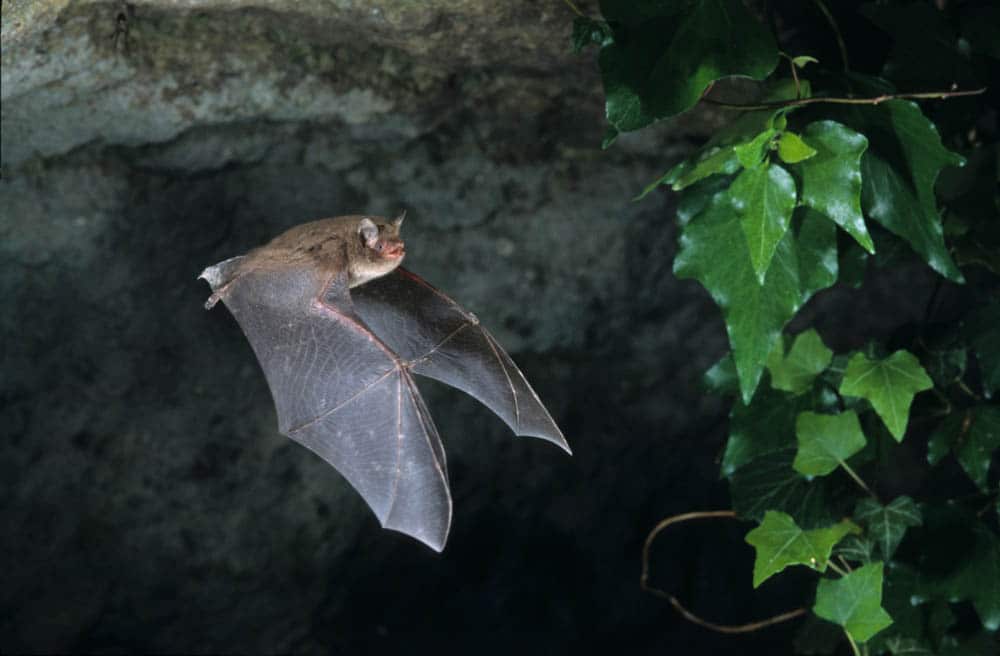
Daubenton’s bats
Scientific name: Myotis daubentonii
Body Length: 45 millimetres
Wingspan: 25 centimetres
Also known as the ‘water bat’, the Daubenton’s bat has a unique ability for flying above lakes, ponds and rivers at high speed and using their feet or tail to forage insects on the surface of the water below. Usually small or medium-size, they have brown fur, a grey stomach and a pink face, and they can live for up to 22 years.

Leisler’s bats
Scientific name: Nyctalus leisleri
Body Length: 64 millimetres
Wingspan: 30 centimetres
Easy to differentiate from other bats, the Leisler’s bat has reddish-brown fur that is often darker at the bottom of their body and sometimes has sections that appear blonde. With longer fur on their upper back, arms and shoulders, they appear to have a lion’s mane and are sometimes known as the ‘hairy-armed bat’. A quick and agile bat, they fly high in the air to target insects that are attracted to lampposts and other sources of light.
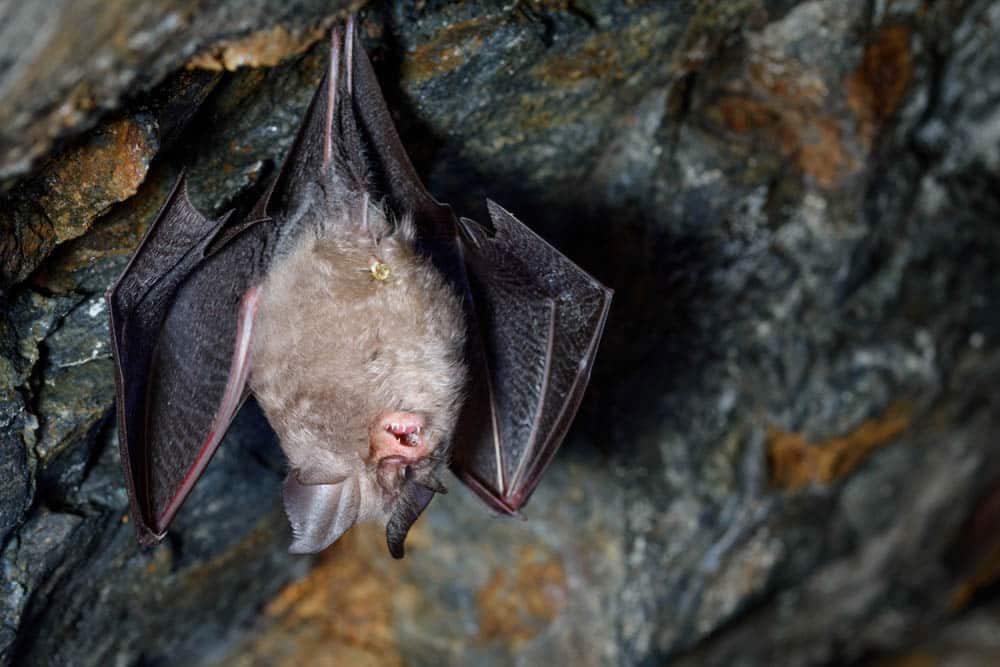
Lesser horseshoe bats
Scientific name: Rhinolophus hipposideros
Body Length: 35 millimetres
Wingspan: 19 centimetres
As with the greater horseshoe bat, the lesser horseshoe bat has a nose that looks similar to a horseshoe. Also like the greater horseshoe bat, they were previously cave-dwellers, but now roost in a multitude of locations. However, they are different in colour, with grey-brown fur on their back and a white stomach, and they are small enough to wrap their wings around their entire body while roosting.

Nathusius’ pipistrelle bats
Scientific name: Pipistrellus nathusii
Body Length: 46 millimetres
Wingspan: 23 centimetres
Similar in appearance to the common pipistrelle bat and soprano pipistrelle bat, the Nathusius’ pipistrelle bat is unique in having bushier fur, a paler stomach and a fluffier tail. Although small, they are strong and are both larger and have broader wings than the common pipistrelle bat and soprano pipistrelle bat.
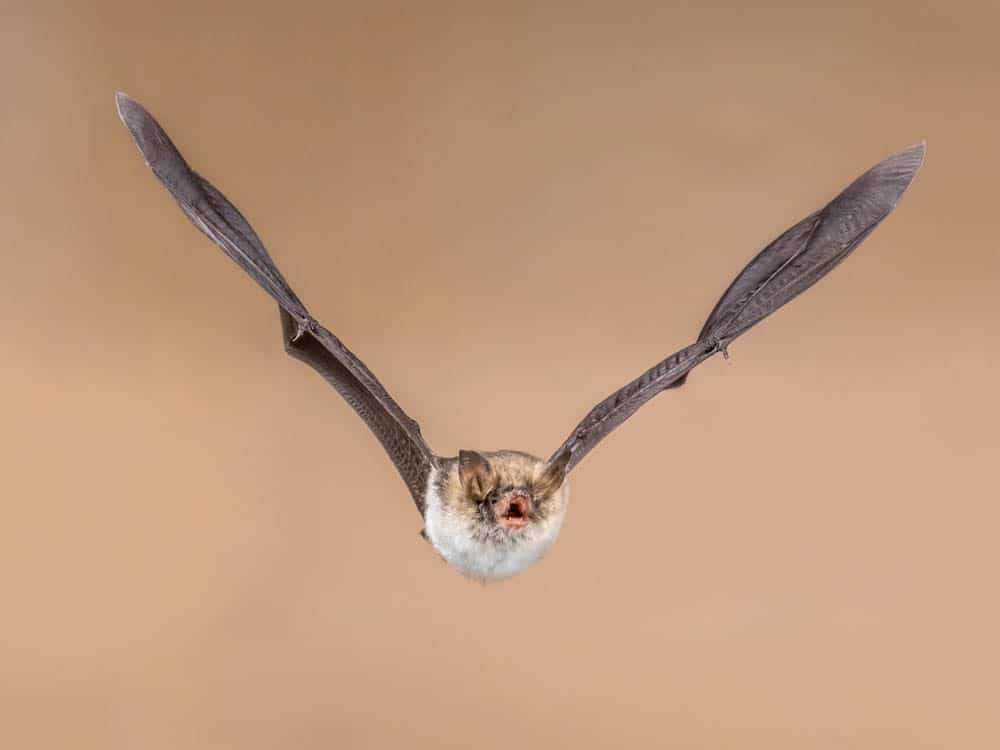
Natterer’s bats
Scientific name: Myotis nattereri
Body Length: 45 millimetres
Wingspan: 28 centimetres
With a notably pointy row of hairs on their tail membrane, the Natterer’s bat has light brown fur, long ears and a pink face. They have broad wings, enabling them to fly low among trees and water, and forage desirable insects directly from foliage. Although they prefer churches and old buildings for roosting, it is rare that they would make a habitat in a residential house.

Noctule bats
Scientific name: Nyctalus noctula
Body Length: 75 millimetres
Wingspan: 36 centimetres
Britain’s largest bat species, the Noctule bat has light brown fur, and their face, ears and wings are distinctly dark. Using their broad wingspan, they can fly quickly and high above trees. Due to their size, they are also capable of foraging larger insects such as flying insects (e.g. flying beetles and moths). They are, however, still small enough to fit in the palm of your hand.
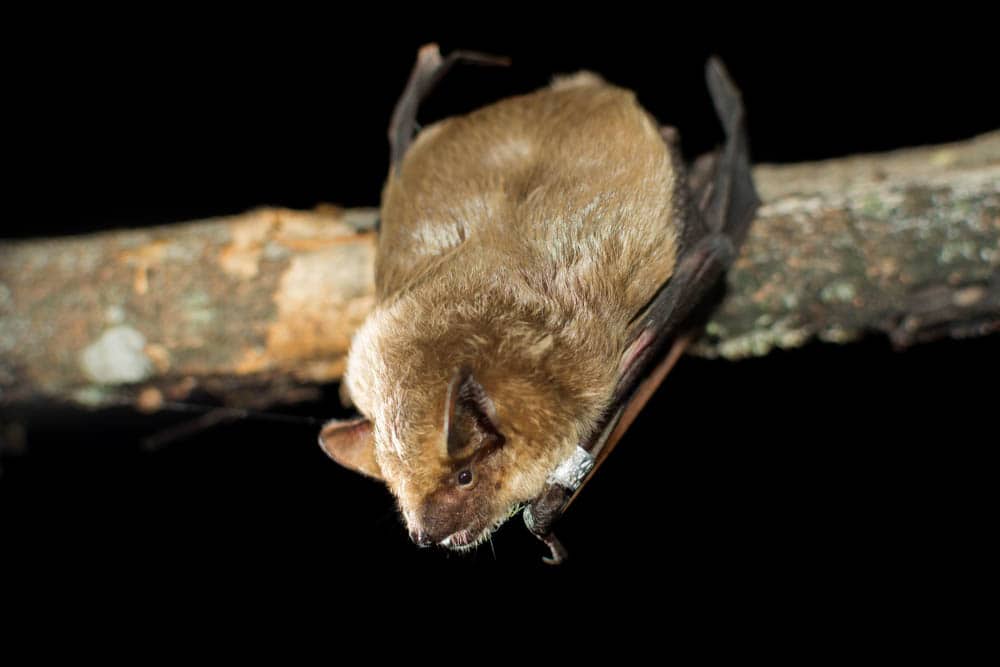
Serotine bats
Scientific name: Eptesicus serotinus
Body Length: 64 millimetres
Wingspan: 35 centimetres
A fairly large bat with broad wings and big ears, the serotine bat has long brown fur on its back, a yellow-brown stomach, and dark ears and wings. Typically active at dusk, they often appear first in the evening, fly to the height of trees and lampposts, and flap their wings slowly to utilise their ability to glide.

Whiskered bats
Scientific name: Myotis mystacinus
Body Length: 40 millimetres
Wingspan: 24 centimetres
Sharing similarly fluffy fur to Brandt’s bats, the whiskered bat is small with brown or grey fur and a grey stomach. They roost in a wide variety of different buildings as well as bat boxes. Due to the similarity with Brandt’s bats, they often pick a separate colony within the same habitat.
Where can I learn more about UK bats?
As you will see from the list of species above, bats are fascinating creatures. If you want to learn more about them, you can find information from a handful of trusted sources. A great place to learn more about the 18 species of bat in the UK and how you can support the conservation and protection of these amazing creatures is through the Bat Conservation Trust website.
The Bat Conservation Trust
Formed in 1990, The Bat Conservation Trust (BCT) is an umbrella organisation and registered charity that has been designed to protect species of bats and habitats that are present in the UK. As an organisation, they have several core purposes including to enhance bat populations, gain support from any relevant external organisations, and review and assess bat populations in certain areas.
Bat Facts
Below, we answer some frequently asked questions about bats and explain more about these fascinating creatures:
Are bats mammals?
Not only are bats mammals, but they are also widely known as the only mammal capable of flight. It is a common misconception to believe that they are related to rodents, but while they are the second largest type of mammal after rodents, the two species aren’t otherwise connected.
Why do bats hang upside down?
One of the unique characteristics of bats is that they hang upside down while roosting. The primary reason for this is that it is an ideal position for when they take off; unlike birds, bats are unable to launch themselves from an upright, standing position.
Between their hind legs being too short to gain enough speed when running and their wings not producing enough lift, a bat simply cannot take off in the same way birds can. As a more feasible alternative, bats climb to a high spot, hang upside down using their claws, and when they want to move, they let go and glide into flight. Additionally, as they often hang in areas that are high up and out of reach of potential predators, hanging upside down is used as an effective method of avoiding danger.
Do bats hibernate?
Just like many other wild animals, bats hibernate during the winter months. Hibernation will usually span between November and May, and in this time, they will hang upside down, maintain a constant temperature, and survive using fat in their system that was stored away beforehand.
How do bats mate and reproduce?
The bat reproduction process spans across several seasons. Male bats will breed with multiple female bats during the autumn. The female bats will then store the bat semen during hibernation and only release it to their ovaries once they finish hibernation in the spring.
A bat’s gestation period usually lasts between six and nine weeks, and as the pregnant bats come close to giving birth, they will gather together in a large maternity roost. Due to the seasonal nature of this process, bats often only have one pup each year.
Do bats roost?
Although bats do roost, they often move between roosts based on the time of year. For example, in the summer, female bats are more likely to come together in large maternity roosts to have their pups, and in the winter, all bats will move into a hibernation roost.
Where do bats live?
In the UK, the most common bat roosting location is in trees. However, they may also choose to roost in bridges, caves, churches, garages, mines, old buildings, rock crevices, roofs, sheds or other areas that may be preferable based on the specific species of bat.
How long do bats live?
Depending on the species, the lifespan of bats can be as short as less than half a decade or as long as several decades. The common pipistrelle bat, for example, lives between four and five years. However, a Brandt’s bat can live as long as 40 years.
What threats do bats face?
Both British bats and bats in other countries share the same universal threats. They include:
- Cat attacks
- Collision with wind farms and wind turbines
- Destruction of bat roosts
- Disease
- Disruption from artificial light
- Hunting
- Exhausted food supply
- Loss of habitat
- Unsuitably planned land development
Do bats have vision?
It is a common misconception that bats are blind. While they cannot see the range of colours humans can, bats can in fact see and possess extremely sensitive eyes that make it possible to see in the dark. Solely in monochrome, research suggests that their eyes have evolved to utilise the cover of night to forage prey undetected. Likewise, this helps them to avoid potential predators who may need the light to hunt them at night.
Bat echolocation
Despite having the ability to see, bats need additional help with moving around to avoid predators and target prey. A method of increasing the level of visibility around them in dimly lit areas, bat echolocation is an effective way of identifying objects, walls and other animals in the vicinity.
How do bats use echolocation?
A form of natural sonar, echolocation requires the bat to produce sound waves from their nose or mouth at frequencies that are above human hearing. The echolocation calls will then bounce off objects and walls in the immediate area and return to them to provide an understanding of their surroundings and gauge how far away specific items are.
Bat echolocation allows bats to experience a similar level of vision to the stereoscopic vision that humans have, and due to its effectiveness, it has been recreated by humans in certain technologies, such as for radar and speed cameras.
Evolution of echolocation in bats
All British bats have the ability of echolocation to visualise more clearly in the dark. However, as a result, many insects have evolved to detect echolocation signals, and if they are able to spot them before the bat can reach them, they can flee from danger. In response, both the brown long-eared bat and the barbastelle bat species have developed a softer, quieter echolocation call that is harder for insects to detect, giving them an advantage over their prey.
Research suggests that echolocation appeared in bats at least 52 million years ago, and over time, they have experienced developments that have made it more effective. For example, it was previously only possible through their mouths before they began to also use their noses, and many believe that the shape of their skull has changed to accommodate echolocation.
Detecting bats
Not only are echolocation calls usually undetectable to the human ear, but bats are a reclusive creature and are skilled at roosting in areas that are dark, hidden, high up and difficult to reach. For some bat species, the frequency is at a pitch that children can hear. But for humans that cannot hear bat calls, you may be wondering how it is possible to detect them.
As it is not possible for humans to hear bat echolocation calls, a specialist piece of equipment known as a bat detector is needed to convert the sound waves into something that can be heard and analysed. Whether it is for a scientific study, bat survey, or for general conservation purposes, the species of bat can then be identified.
More specifically, a bat detector uses frequency division, heterodyne and time expansion to alter the sound waves. Once a tangible sound file has been created, the surveyor will either use a form of computer software to achieve a reliable identification of the species or, if possible, identify it themselves. For example, the common pipistrelle bat possesses a frequency of 45KHz while the soprano pipistrelle has a deeper 55KHz frequency. As such, if the surveyor identifies the bat as being either one of these species, the frequency will determine which type.

There are no comments yet. Why not get involved?